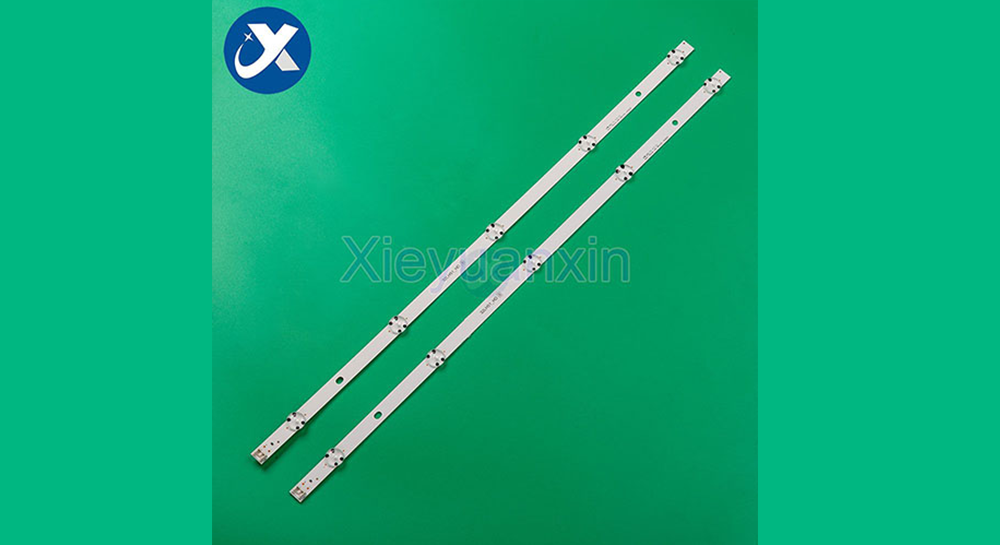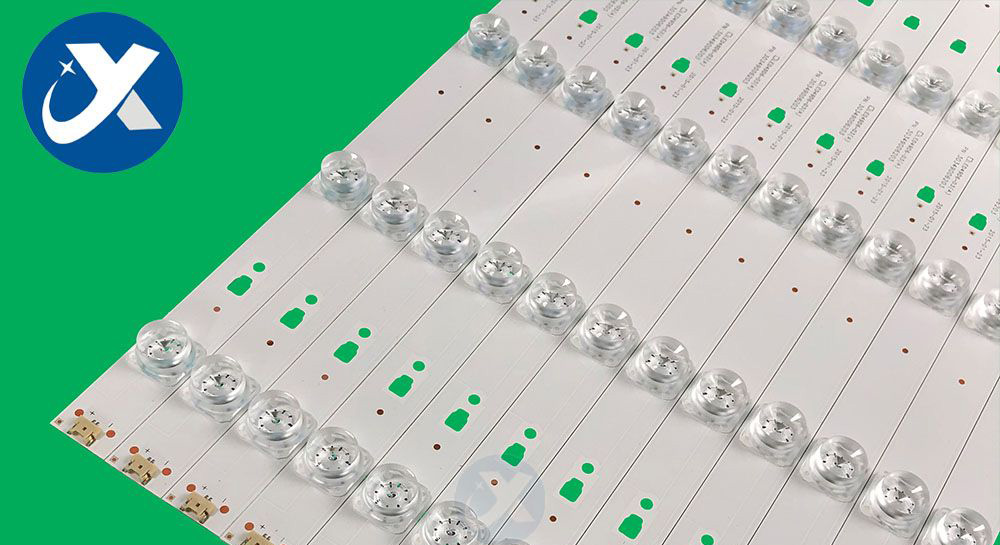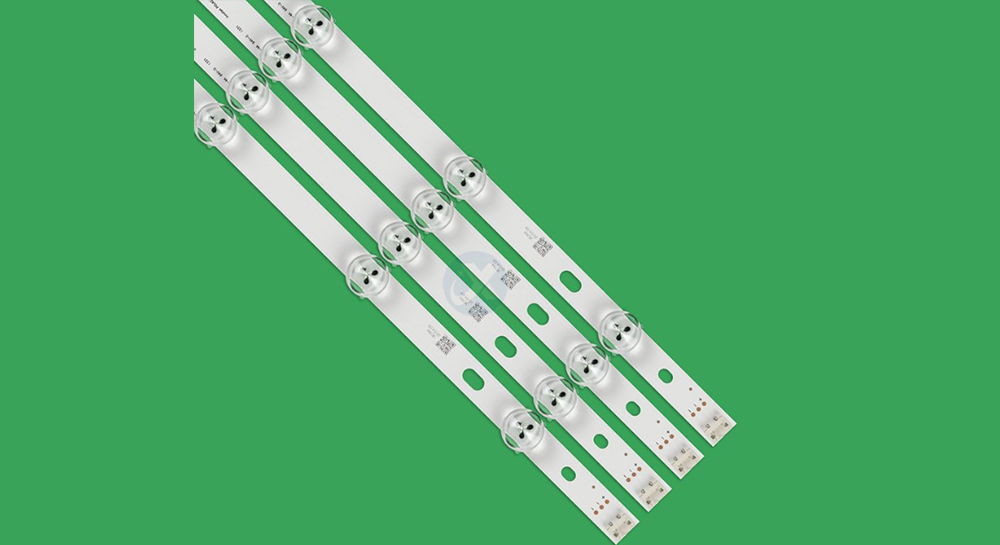The use of flexible LED strips is rapidly emerging in modern lighting design around the world. Architects and lighting designers are using LED strips in residential, commercial and industrial projects at an increasing rate. This is due to improvements in efficiency, color options, brightness and ease of installation. Homeowners can now design with a complete lighting kit and an hour or two just like lighting professionals.
There are many options on the market for LED strips (also known as LED tape lights or LED strips), and there are no clear criteria for how to choose an LED strip. We have created this guide to educate experts and novices alike.
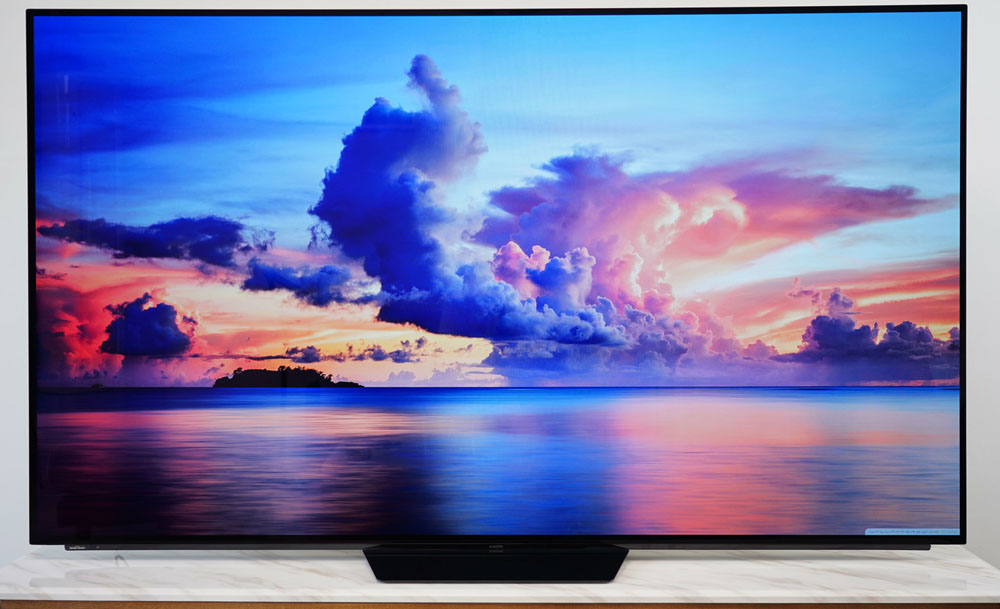
Important notes before starting a project.
Step 1: Start with a clear vision!
Because every project is unique, there is no all-in-one solution. Different projects require different types of LED strips. Before starting any project, please answer the following questions in your head. We are also here to work through these with you.
Location
● What type of location are you in? Residential, commercial, retail, outdoor?
● What specifically will you be lighting?
● Where will it be installed? Under cabinets, skirting boards, bays, eaves and awnings, backlighting, display cases, ISS?
● Will the light be exposed to the elements or liquids?
● What material will the lighting be attached to?
● How many feet do you need?
Function and Aesthetics
● What overall look do you want to achieve?
● Do you want accent lighting, task lighting, perimeter lighting, indirect lighting, main lighting, special applications, etc.
● What materials or objects am I lighting or using the strip for?
● Do I need a high color rendering index to achieve high color rendering? (see below for explanation)
● Do you want the lamp to emit only white light? A single color such as red, green or blue? Have the ability to change the color with the remote control? Or have the ability to change the white output from warm white to cool white using the remote control?
● Are there other lights in the area, and if so, what colors are they?
● Would you like to dim the lights or control them with a remote control or wall switch?
Mood
● What is the non-physical result you want to achieve?
● Do you want to create an environment that is calm, inviting, energetic, hopeful, safe, relaxed, bold, or fun?
● What do you want your guests and customers to think or say when they enter your space?
4 Things You Need to Know Before Choosing or Comparing LED Light Strips
1. Compare lumens, CCT and CRI (Color Rendering Index)
1.1 Lumens (Brightness)
Lumens are the measurement of brightness as perceived by the human eye. Because of incandescent lamps, we are used to measuring the brightness of light in watts. Today, we use lumens. Lumens are the most important variable when selecting the LED strip you need to view. When comparing lumen output between strips, be aware that there are different ways to say this.
The question you should ask is "What are lumens? Per foot, meter or reel? How long is the reel? "
Different projects require a certain amount of brightness to achieve the desired look. Our recommendation is to always go brighter than needed and add a dimmer. Running LEDs at less than their full power and brightness will also extend their life.
Here are general guidelines. We are always available to help you design your project.
Quick guide to lumens required by project type.
Accent and mood lighting - 100 to 350 lumens per foot
Under-cabinet lighting - 175 to 525 lumens per foot
Task lighting at short distances from the light source - 280 to 437 lumens per foot
Task lighting at greater distances from the light source - 500 to 1000 lumens per foot
Indirect lighting in bedrooms/hotels/vehicles/lobbies - 375 to 562 lumens per foot
Industrial lighting / signage / lamp replacement - 500 to 950 lumens per foot
IMPORTANT: Be careful if the company does not state the lumen output. You will not know what the brightness is until you purchase them.
Using lumens as the only comparison can be tricky! Some brands of LEDs are overpowered to make them brighter. Sadly, this causes them to fail and burn out faster. We power our LED chips to make sure they last longer than their rated value.

Correlated Color Temperature
1.2 CCT - Color Temperature
CCT (Correlated Color Temperature) is the color temperature of light, measured in degrees Kelvin (K). The temperature rating directly affects the appearance of white light; it ranges from cool white to warm white. For example, a light source with a rating of 2000 - 3000 K is considered to be what we call warm white light. Warm white light looks orange and/or yellow. As the Kelvin increases, the color will change from yellow to yellow-white, then to white, then to blue-white (which is the coolest white). Although different temperatures have different names, they should not be confused with actual colors such as red, green or violet. CCT is specific to white light or more specifically color temperature.
"I can order a 6000k light from Amazon and a 6000k light from you, will they look the same?" The answer is most likely no.
Not all CCTs are created equal. You may notice that some of the "cool white" lights may not look pure white. They may give off a green, purple or blue tint. This is because the LEDs are selected from pre-sorted stacks (boxes) that are away from true white to save money. It is important to ask the manufacturer of the LED strips how they sort their LEDs and what their selection process is. Our strips are always selected from the same box to ensure that each batch is the same and there are no color differences.
Which color temperature should you choose?
This is an example of the same bedroom under 2700k, 3500k, 4200k and 6200k lights. Notice how the lighting changes the mood and style of the space! The aesthetics, function or mood of a space may change depending on the color temperature you use. Choosing the right color temperature is not difficult, but be sure to consider the color of the walls, flooring, what you will be lighting, what activities will be accomplished in the area, or if there are local regulations that tell you what CCT to use (such as California's Title 24).
If you are having trouble choosing the best LED CCT for your project, consider purchasing a tunable white Light Strip.
● Dynamically Tunable White LEDs allow you to select CCTs from 2700k - 5000K via remote control
● Dim-to-Warm LEDs allow the LED strip to change from 3000K to candlelight 1800K as you dim it
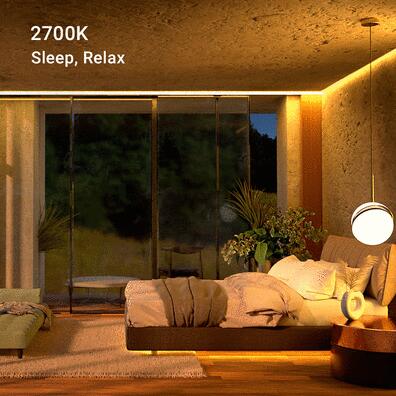
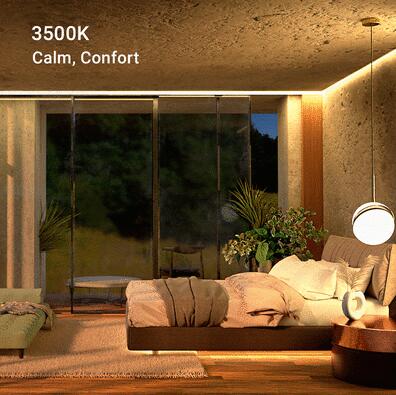
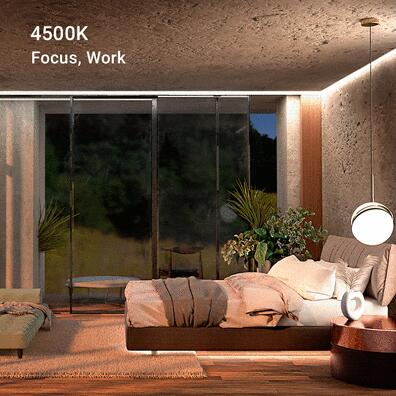
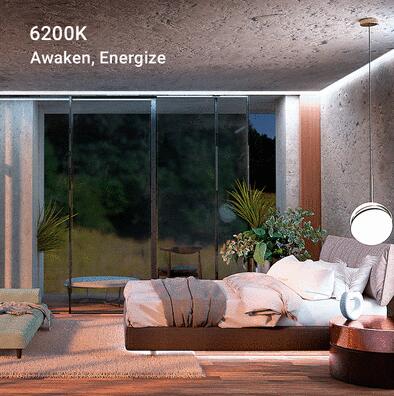
1.3 CRI - Color Rendering Index
Can't tell the difference between black and navy blue socks in your walk-in closet? It could be that your current light source has a very low CRI!
The Color Rendering Index (CRI) measures how well color is rendered by a light source compared to natural sunlight. This index is measured on a scale of 0-100, with 100 being the perfect level of color accuracy, meaning that colors appear naturally in pure daylight. High CRI lighting is sought everywhere, but is especially valuable in this context. The bottom line: the higher the CRI, the higher the quality of the light source. This rating is also a measure of the lighting industry and helps to identify naturalness, hue discrimination, vibrancy, preference, color naming accuracy and color harmony.
95 - 100 CRI → Extraordinary color rendering. Colors appear as they should, subtle tones stand out with accents, skin tones look beautiful, art comes to life, and backsplash and paint show a truly beautiful saturation. You have to see it to believe it!
90 - 95 CRI → Excellent color rendering! Almost all colors "pop" and are easy to distinguish. Significantly better lighting starts with the 90 CRI.
80 - 90 CRI → Good color rendering, most colors are well rendered. You may not see the fully saturated items you want, but most people won't notice.
60 - 75 CRI → Poor color rendering. Items and colors may look unsaturated, monochromatic, and sometimes unrecognizable (can't tell the difference between black and navy socks).
2. Compare the LED strip size and the number of LEDs on the strip
Traditionally, LED strips are packaged on a 5 meter or 16' 5'' spool (bobbin). The machine used to "pick and place" the LEDs and resistors on the flexible circuit board is typically 3' 2'' long, so the parts are soldered together to complete the entire spool. If purchasing, make sure you are buying by the foot or by the reel.
Measure how many feet of LED strip you need before you start. This will make it easier to compare prices (after comparing quality, of course). Once you have determined the number of feet on the reel you are selling, look at how many LED chips are on the reel and the type of LED chips. This can be used to compare LED strips between companies.
3. Power consumption per LED strip
Power consumption is one of the reasons why our entire society is starting to move to LEDs. The wattage tells us how much power we are consuming when these lights are on and how much we will have to pay for at the end of each month. Once again, be sure to verify the wattage per foot, meter or reel before you buy.
Some people may read "24 watts" on a reel and then go home and realize it's per meter or per foot, which means the entire reel is actually using more. Worse, they buy a 30-watt power supply and think that's enough. This usually happens when sellers don't properly list important information in an easy-to-read format.
Finally, make sure you understand the voltage used by the flexible LED strip. If you buy a 12-volt power supply, using a 24-volt LED strip will not work and could also cause a fire hazard. You need to choose the correct power supply for your lights.
Proven quality
You're looking for a "one-and-done" lighting system that will last for years to come. To ensure that your LEDs have the expected lifespan, are safe around your home and business, and don't require additional maintenance costs to replace, you need to verify the quality claims.
1) Thermal Management - Heat = LED death. Ask if and how the LED strips are designed for proper thermal management and heat dissipation. If they are not, the LED's 50,000+ hour LED chip life may drop to 10,000 or 20,000 hours. This can be done at the chip level and at the PCB level. Do not rely solely on aluminum heat sinks to dissipate heat away from the LED. Products should be designed at the component level to ensure a longer life.
2) Color Quality and Accuracy - When you purchase a "3000K Warm White" LED strip, you should not expect the LED to appear bright white. Ask for a test report to prove that the color you are buying is the color that will arrive. This is especially important when adding additional lighting to an existing installation. If the color does not match, it will be very noticeable.
3) Safety Certifications - It is difficult to verify a seller's safety claims using Amazon or Ebay alone. Check UL listings, REACH or RoHS registries to ensure that LEDs are safe and do not contain lead or other hazardous materials.
4) Material Quality - Product performance and longevity depends not only on the quality of the LED, but also on the thickness and materials used in PCBs, resistors, wires, and lead-free soldering.
5) Test Reports - Request test reports to verify brightness and lifetime claims. These may include LM-79 tests, IES reports, etc.
6) Warranty, Customer Service and Installation/Design Assistance - Big or small, we are here to help you design your project. Our LED strips represent the highest quality on the market today and will illuminate your project area for years to come.










